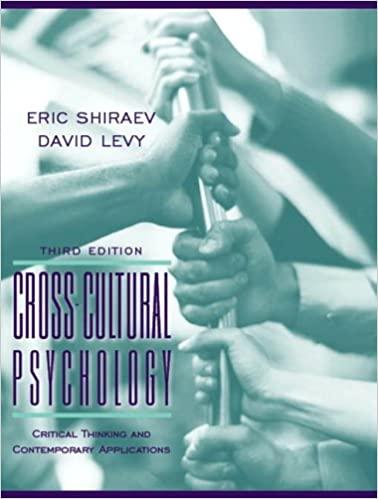Question
Contrast jury nullification in trials that occurred in the mid-1800s, in the early years of the civil rights movement, and in Beckwith's retrial in 1994.
Contrast jury nullification in trials that occurred in the mid-1800s, in the early years of the civil rights movement, and in Beckwith's retrial in 1994. What do these examples have in common? How are they different?
The Case of Byron De La Beckwith: Jury Nullification and Race
Eager to see his children after a long day at work, civil rights leader Medgar Evers stepped out of his car in Jackson, Mississippi, on a hot June night in 1963 and was gunned down from behind by an assassin. The shooting ignited a firestorm of protest that ended in sev- eral more deaths and galvanized the civil rights movement.
The case against Byron de la Beck- with was strong but circumstantial. His rifle with his fingerprint was found at the scene, and a car similar to his was seen in the vicinity of Evers's home. But no one saw Beckwith pull the trigger, and his claim that he was 90 miles away at the time of the shooting was substantiated by two former police officers.
Beckwith was tried twice in 1964; both times the all-White, all-male jury deadlocked and failed to reach a verdict. This was an era of volatile race relations in which African Americans were excluded from jury ser- vice and in which attorneys for Ku Klux Klan members charged with killing civil rights leaders openly appealed to White jurors for racial solidarity. Beckwith's segre- gationist views were a common bond between himself and the juries that failed to convict him.
But things were different when Beck- with was retried in 1994. Despite the obstacles presented by stale evidence, dead witnesses, and constitutional ques- tions, prosecutors put Beckwith on trial for the third time. This time, Beckwith's racist ideology was a liability. Despite pleas from defense attorneys that jurors not focus on Beckwith's sensational beliefs, a jury of eight Blacks and four Whites convicted him of murder in 1994. He was immediately sentenced to life in prison. Darrell Evers, the slain civil rights leader's son, who was nine years old at the time of the shooting,
said he attended the trial to confront Beckwith: "He never saw my father's face. All he saw was his back. I wanted him to see the face, to see the ghost of my father come back to haunt him."
Step by Step Solution
There are 3 Steps involved in it
Step: 1

Get Instant Access to Expert-Tailored Solutions
See step-by-step solutions with expert insights and AI powered tools for academic success
Step: 2

Step: 3

Ace Your Homework with AI
Get the answers you need in no time with our AI-driven, step-by-step assistance
Get Started


